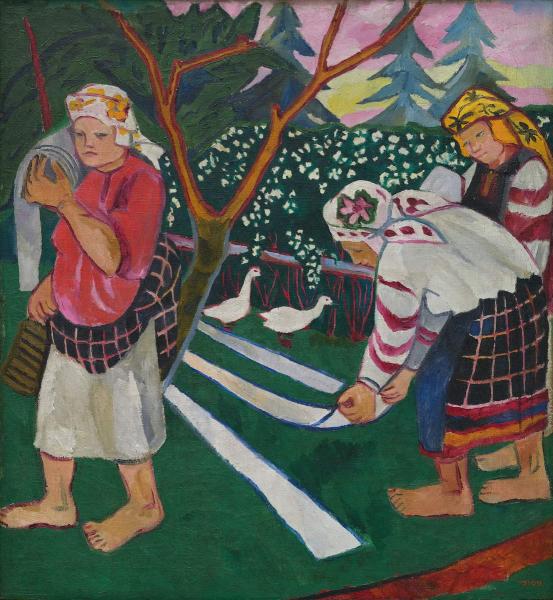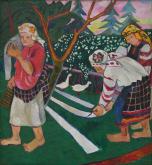Bleaching Canvas
About 1907
- Period Late 19th century – Early 20th century
- CategoryGenre Painting
- Share
Goncharova was on of the first young Russian artists who opposed their expressive painting to impressionism. She was captivated by the sharp distinctiveness of unprofessional art such as children’s drawing, chip popular prints, painted provintional signboards. Neo-primitivism was for her a way to the sphere of pure art intuition. She turned to the subjects from peasant’s life and treated them avoiding social background that was common for the national art. The artist was interested in age-old repeated activity – bleaching canvas, harvesting, doing the washing. Goncharova presented the scenes without any narrative, the characters seem to be self-absorbed, as if they were performing a sacred action. The whole scene is represented as a rite dating from the ancient times. This feeling is supported by the simplified forms of the figures, their arms and legs. Here one can see Goncharova’s interest in archaic sculpture of Scythians. The peasants dressed in smart bright clothers tipical for the South Russian region seem to be as Scythian sculptures with their enigmatic and impersonal faces that have come alive.

